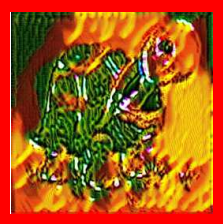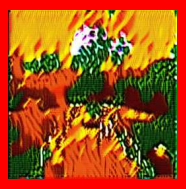Computers have already learned to copy the visual styles of Renaissance masters, turning your bathroom selfie into a Michaelangelo. Now, AI can take a photo and render it in the style of famous children's book illustrators like Dr. Seuss and Beatrix Potter.Sort of. Actually, the resulting images are terrifying, and should not be shown to children. Sweet Jesus, no.

Why is the turtle on fire? WHY IS THE TURTLE ON FIRE?
Advertisement
The research, posted on Wednesday to the arXiv preprint server, comes from researchers at Hacettepe University and Middle East Technical University in Turkey. According to the paper, the work was inspired by the ability of a young child to recognize the style of children's book illustrator Korky Paul in numerous books. Can a computer do the same?The first step was to train a deep learning algorithm, which learns to recognize patterns in a large amount of information, to tell the difference between illustrators. That meant assembling a large dataset of 6438 illustrations from 223 children's books, by 24 illustrators. Some were very well-known, like Dr. Seuss and Maurice Sendak ( Where the Wild Things Are), and some less so. After letting the algorithm loose on this collection of images, and with some tweaking, it was able to recognize these authors' styles with surprising accuracy—94 percent.OK, so how did they get from there to Hell Turtle? The key is a technique known as style transfer, which is behind apps like Prisma that turn images into works of art. Once a neural network has learned the defining characteristics of a particular artist, it can "transfer" them to a new image. Perhaps due to the small sample size in the data set (just a few illustrations per artist), the AI was not very good at this. At all.Behold, Arthur's New Puppy as illustrated by Hieronymus Bosch:
Hicsonmez et. al.
As you can see, the neural network was mostly transferring colour, which likely means that the illustrators' use of colour was the main feature that it learned in order to tell them apart. It's also the main feature it knows to apply to new images, turning a placid snowy scene into a vision of the heat death of the universe.

Better luck next time!
